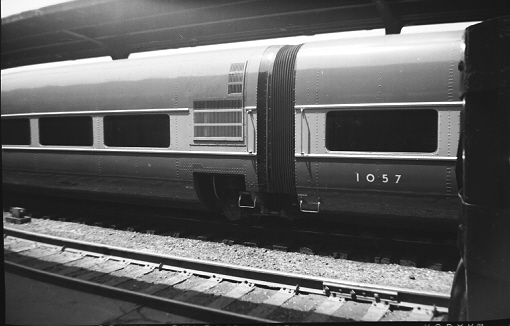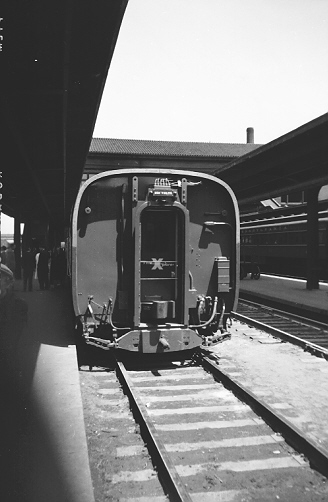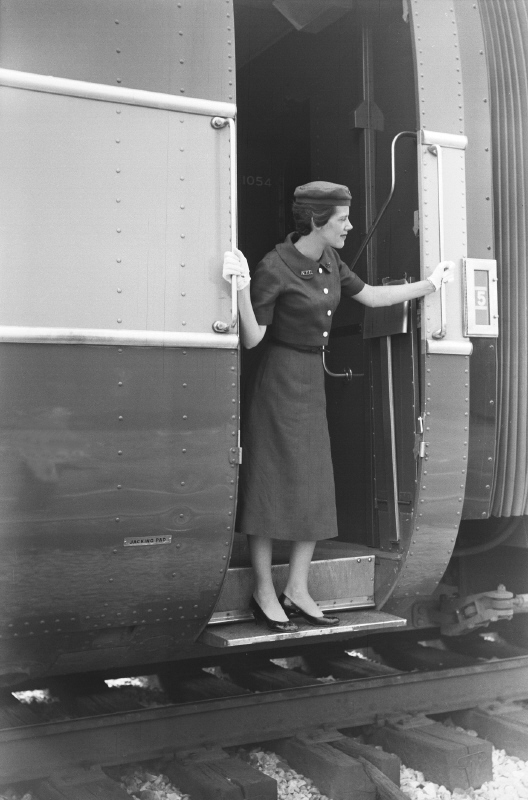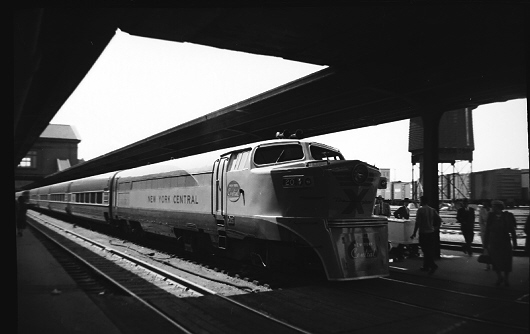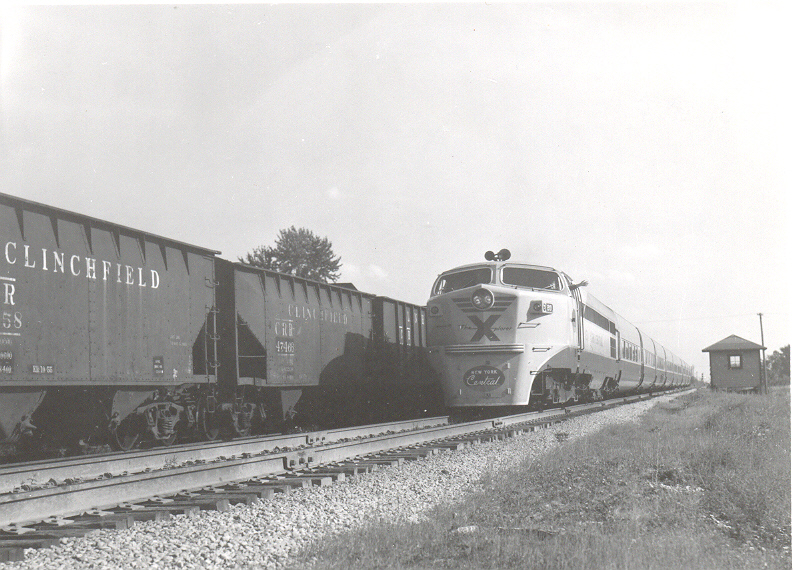|
The Tomato Can
By the 1950's passenger train service was a big problem for all the railroads. Even the best, well patronized trains were losing money. Expenses continued to rise while income continued to drop. There were two developments underway that were only going to make matters worse - the expanded use of air travel and the rapid construction of President Eisenhower's interstate highway system. While the railroads would just as soon drop all passenger trains, the Interstate Commerce Commission and the State Commerce Commissions made that a tedious and time consuming process. The railroads had to show that they were making a good faith effort to make their passenger service viable. In an effort to come up with ways to cut costs the Xplorer trains were developed one set for the New York Central Railroad and a set, with some differences, for the New Haven Railroad.
The Yellow and green Xplorer showed up on the Cleveland - Columbus - Cincinnati run around June, 1956. It was an additional train instead of replacing one of the existing trains possibly because it carried no baggage, other than passenger carry on baggage, nor could it pull any baggage cars. The fellows at the railroad museum (Ohio Railway Museum) were quick to dismiss it with George Silcott dubbing it "The Tomato Can" as in "here comes the Tomato Can". I think their sense of the value of the Xplorer was correct, it wasn't going to save the passenger train from its eventual demise. It was still an interesting concept with unfortunately a few too many problems. All nine passenger cars except for the one in the middle of the train had only a single axle with the middle car having an axle at each end. The other passenger cars hung off the middle car or each other. That meant that most of the shocks and bumps of the road bed were carried directly into the passenger car giving the train a very rough ride.
Another innovation was found in the locomotive. Almost all diesel locomotives are actually diesel-electric. The prime mover, the diesel, powers an electric generator which in turn provides electricity to traction motors mounted in the trucks. The Xplorer did have a 1000 HP diesel engine, but it powered the wheels on the power truck through a hydraulic-mechanical transmission. In addition the transmission and engine were mounted on the front truck rather then on the locomotive frame as is normally done. This provided a bruising ride for the power plant. Every low rail joint added bounce and shock to the unit. In 1956 the Cleveland - Cinncinnati route did not have ribbon rail. It used 39 foot rail sections with angle irons connecting them. When well maintained it could provide a smooth ride, but more often than not dips would develop at the rail joints. At 70 MPH those bumps were coming fast causing excessive jostling and movement to the power plant. The Xplorer had a reputation for frequent breakdowns. This may have contributed to its problems.
I Rode the Xplorer several times. Once while riding to Cleveland with my friend Dave Bunge we had a real treat. Dave's specialty was photography, but he had the fearlessness of a reporter. It was dark and he got a little bored deciding he wanted to walk the train. When he got to the front he found a traveling mechanic who was along to try and keep that engine running all the way to Cleveland. Some how he talked that mechanic into taking us through the engine compartment to the cab. My memory after 50 years is a little dim, this is what I remember. The passage was narrow and clearances low for two fellows over 6'. We had to step over the coupler to get through the two doors separating the passenger car from the locomotive (see picture of the back of the train) and at the same time try to keep our balance as the locomotive was bouncing quite a bit. When we got along side the diesel engine we could see to the roadbed and also we could see that the engine was in violent motion seemingly to be moving in all directions at the same time. It's no wonder that it broke down so often. It was a little hard to fit three more people into the cab. The crew was a little surprised to see us. However, they were friendly and answered our questions. The track was straight as an arrow, the engineer told us it was the longest stretch of straight track in Ohio. I never did check this out to see if it is true. Then it was back through the engine compartment. The other experience I had with the Xplorer happen on a trip to Cincinnati. We were buzzing along when all of a sudden the brakes went into emergency. This is not something lightly done on a passenger train for no other reason then it can cause flat spots on the wheels. The conductor was just walking toward the front of the car when this happened and he quickly sat down in the front seat and braced his feet on the front wall. He seemed quite excited as he told us to brace ourselves. As it happened a truck had been slow clearing the crossing ahead and the engine just scrapped it as it passed the crossing. A half-hour delay and on we went. This does illustrate why I think the train crews didn't really like working on the Xplorer, although I never remember hearing anyone actually say this. The train was very light and it was set lower on the track compared to a conventional train. In any collusion with either another train or a big truck the fireman and engineer wouldn't have a very good chance of surviving. The Xplorer would be smashed, well, like a tomato can hit by a big hammer.
On some of he early runs of the Xplorer they actually carried a stewardess. She was probably subject to motion sickness along with the rest of the crew and passengers. She handled the food cart and kept the kids entertained. It was a nice touch. The photo on the left was taken at Columbus Union Station. Photo by AJC. The Xplorer was shortly off the Cleveland - Cincinnati run probably by 1957 and retired by 1960. To see color photos of the Xplorer and learn a little about its last days click here.
All photos in this article were taken in the summer of 1956. |


